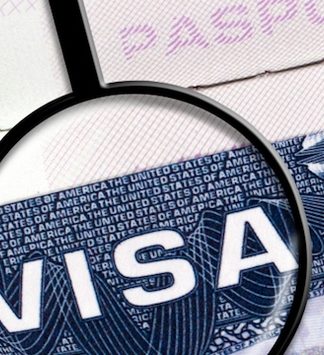Financial crime compliance: Trends to watch in 2024
FILE – In this June 15, 2018, file photo, cash is fanned out from a wallet in North Andover, Mass. As you plan your holiday giving, you may be thinking about adding service wo
By Indrabati Lahiri
Published on 03/01/2024 – 17:47
Share this article
Comments
Euronews Business looks at LexisNexis Risk’s assessment of the top trends for financial crime compliance that are likely to emerge this year
Financial crime compliance has become all the more important amid geopolitical upheaval caused by the ongoing Russia-Ukraine and Israel-Hamas conflicts. This has led to increased worries and speculation about the rise of money laundering rings and other financial crime rackets used to fund these wars.
The rise of cybercrime has also been a concerning feature of both conflicts, especially related to hacking and spreading disinformation. Cybercrime is expected to soar to cost the world about $9.5 trillion (€8.67 trillion) this year, according to Cybersecurity Ventures.
Financial criminals often rely on digital assets and dark web marketplaces to shroud their identities. As such, financial crime compliance has had to evolve and strengthen itself accordingly, to be able to deal with these more sophisticated kinds of fraud.
LexisNexis Risk Solutions outlines some of the financial crime compliance trends to look out for in 2024.
Real time monitoring could ease trade compliance navigation
In 2022, global real-time transactions soared 63.2%, with 27.8% of all electronic transactions being done in real-time. With an increasing number of new financial and payment technologies, real-time monitoring has become all the more crucial to keep track of potential fraud, especially when it comes to enforcing various sanctions.
Furthermore, trade compliance can be quite difficult for both banks and non-bank financial institutions (NBFIs), as regulatory frameworks and tariffs change constantly to accommodate geopolitical shifts. For corporates as well as banks, these rapidly evolving regulations form the biggest headache, whereas for NBFIs bureaucracy-laden processes remain one of their main challenges.
More efficient real-time monitoring is expected to continue helping with both these factors this year.
Currently, banks, non-banking financial institutions and corporations have different rates of adoption when it comes to trade screening compliance.
Data and analytics emerge as strategic assets
With data and analytics playing such a huge role in compliance management, it is extremely likely that more companies will put them front and centre and invest heavily in more sophisticated analytics.
This includes the resources to gather and analyse big data, especially when it comes to more effective decisions within the company. Predictive analytics are also likely to be used widely, when it comes to forecasting risks related to financial crimes such as money laundering. They can also help widely in tracking transactions and Know Your Customer (KYC) processes.
Furthermore, this year, companies could see more value in bringing all their processes and departments onto one common digital platform or database for smoother processes and insights, according to LexisNexis Risk Solutions.
Wildlife trafficking could bounce back to pre-pandemic levels
Currently the fourth largest illegal sector globally, wildlife trafficking is booming and shows no signs of abating in the coming year, having returned to pre-pandemic levels. This is largely due to a massive network of cross-border players and a high risk-reward ratio.
Wildlife trafficking involves corrupt governments, entire financial systems, logistics companies and organized crime rings, following in the footsteps of illegal drugs and arms smuggling routes. Revenues from trafficking usually fund more financial crimes. Not only this, but it can also cause significant health and environmental issues, spreading diseases due to the lack of appropriate surveillance and containment for animal parts entering different countries.
50% of maritime seizure weight in 2022 was rhino horn, elephant ivory and pangolin scales, with India, China, Indonesia and Malaysia being some of the biggest players. For ivory, one of the most trafficked of the wildlife goods, only about 10% is ever caught by law enforcement agencies.
‘Russia is the most sanctioned country in the world’: Does the war in Ukraine fuel financial crime?
Changing sanctions may push compliance to evolve accordingly
Following the Russia-Ukraine war, a number of countries have sanctioned Russia. In the first half of 2022, there were 193 updates to the UN, EU and UK lists. For the UK, this was across the Office for Foreign Assets Control (OFAC) and Office of Financial Sanctions Implementation (OFSI).
During the same time, 3,854 more designations, covering ships, people and entities, were added to these lists. In the first half of 2023, there were 133 updates across these lists, with 2,050 more designations included.
The fast-changing and complex nature of multiple international sanctions has made it much harder for companies and financial crime compliance to keep up with them. This is likely to increase the need for dynamic and continuous risk assessment and automated compliance checks. This will ensure companies mitigate their risks of being in breach of any sanctions in the coming year.
Unveiling UBOs starts to become easier
The Ultimate Beneficiary Owners, or UBOs of an organisation are individuals or entities who have more than 25% of voting rights, own more than 25% of the company’s shares or can exercise control of the organisation in some other way.
With the rise of shell companies and fraudulent accounts, knowing the true identity of customers and UBOs has become all the more vital. Without proper identifying measures, UBOs can hide the actual purpose of an account, shroud the origin of funds as well as veil their real identities.
This can make it much easier for terrorist funding and money laundering, amongst other things to carry on unabated. In 2024, banks and financial institutions are likely to lean more on data analytics and automation in order or gather customer data and identify UBOs faster and more efficiently. This could go a long way towards reducing risk and meeting compliance standards.
Artificial intelligence continues to help financial crime compliance
With the rise of chatbots such as ChatGPT and more recently Elon Musk’s xAI’s Grok, artificial intelligence (AI) is here to stay, as several banks and financial institutions are increasingly understanding.
As such, AI can also go a long way in helping assess risks in real-time, as well as reducing costs and bettering efficiency by streamlining systems. It can also help immensely in pattern recognition and behavioural analysis, which can help identifying and hopefully preventing financial crime.
Currently 80% of global banking executives think AI might give them a competitive advantage, whereas 58% of banks use AI for fraud detection. Artificial intelligence is also endorsed by the intergovernmental Financial Action Task Force (FATF) in the struggle against terrorist funding and money laundering.
However, implementing and integrating artificial intelligence tools across departments and systems can be quite an undertaking, with significantly high costs, which could be an impediment towards more companies adopting it this year.
Soaring compliance costs battle with customer experience demands
As compliance costs continue to creep up, several businesses may have to make a key choice in 2024 – whether to improve customer experiences or meet compliance regulations. Both banks’ and other non-bank financial institutions want quicker services such as real-time solutions to applications, questions and transactions.
According to 85% of financial crime compliance professionals, customer experience needs to be put first, whereas 82% feel that regulatory compliance should be more important.
However, this also means that they will have to wait for such processes, especially newer ones, to get adequate approvals and meet regulatory standards. At the same time, organisations also face cost pressures and the additional stress of trying to reduce approval times, lest customers go elsewhere.
This could therefore continue to be a high-stakes balancing act for many in 2024, especially in those countries which are still grappling with surging inflation.






























